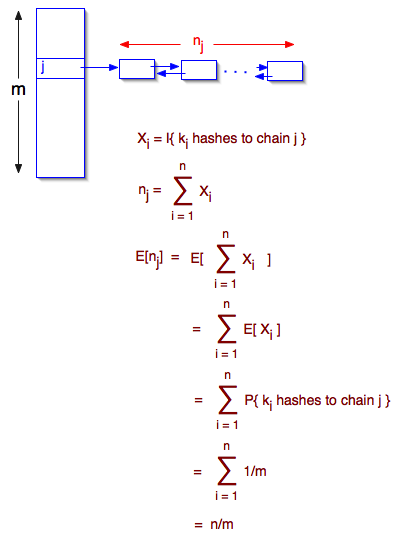SUNY Geneseo Department of Computer Science
Probability, Expectation, and Indicator Random Variables
Thursday, April 25
CSci 242, Spring 2013
Prof. Doug Baldwin
Return to List of Lectures
Previous Lecture
Questions?
Table size and hash function
- No point in table being bigger than max value h() produces
- Hashing strings to get large hash codes
h = 0
for each character c in string
h = ( h * 256 + c ) % tableSize // Can also multiply c by its position and add to h
Java Scanners
Generally a scanner is something that breaks a stream of characters into “lexemes” (word-like units such as words, numbers, punctuation marks, etc.)
Demonstration program that reads words from a file and prints them
Probability
Appendix C.2 through discrete distributions, C.3 through expected value, and analysis of hashing with chaining in 11.2
Indicator random variables
- Random variable whose values are 1 if some event happens and 0 if event doesn’t happen
- Book’s example of an indicator for two keys hashing to the same chain: Xij = I{ h(ki) = h(kj) }
- Expected value of an indicator random variable
- E[ X ] = x1 p{X=x1} + x2 p{X=x2} + ... + xn p{X=xn}
- E[ I{e} ] = 1 p{e} + 0 (1-p{e}) = p{e}
- Application: rigorously derive the expected length of a chain in a hash table
- nj = length of chain j in hash table
- Intuitively, E[nj] = n/m

Next
Analysis of hashing
- Review “Analysis of hashing with chaining” in section 11.2 (middle of page 258 through bottom of 260)
Backtracking review
Next Lecture

